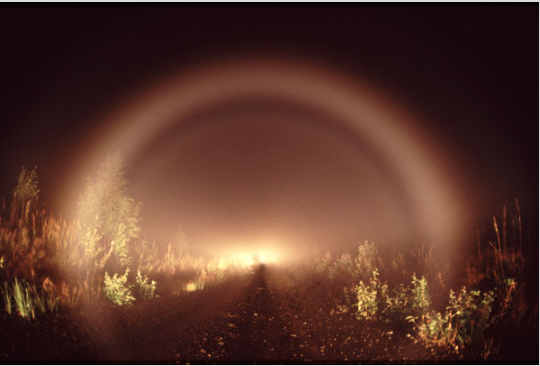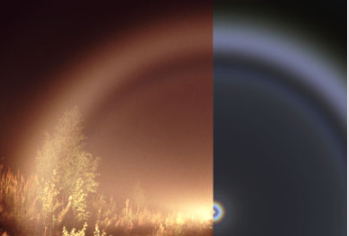Car fogbow II
Car Fogbow II: A Spectacular Display of Atmospheric Optics
Have you ever witnessed a mesmerizing phenomenon known as a car fogbow? These ethereal displays of atmospheric optics occur when light interacts with fog droplets, creating a captivating spectacle. In this article, we delve deeper into the enchanting world of car fogbows, focusing specifically on the awe-inspiring car fogbow II captured by Marko Riikonen and Jukka Ruoskanen during the previous autumn.
The Beauty of Car Fogbows
Car fogbows are similar to their more commonly observed counterparts, rainbows, but with a unique twist. Instead of raindrops, these captivating displays form when light interacts with fog droplets suspended in the air. The result is a ghostly, colorless arc that appears to hover above the ground.
The Anatomy of a Car Fogbow
Car fogbows are characterized by several distinct features that set them apart from other atmospheric phenomena. In the case of car fogbow II, the fog consisted of older droplets with a wider size distribution. This variation in droplet size led to a narrower and closer supernumerary, which is an additional set of fainter colored bands that can sometimes be seen within a rainbow.
Exploring the Science Behind Car Fogbows
To gain a deeper understanding of the science behind car fogbows, let's delve into the interaction between light and fog droplets. When light encounters these tiny water droplets, it undergoes a process called diffraction. This causes the light to spread out and form a circular pattern, giving rise to the circular shape of the car fogbow.
Droplet Size and Distribution
The size and distribution of the fog droplets play a crucial role in shaping the appearance of a car fogbow. In the case of car fogbow II, the mean diameter of the droplets was approximately 17 microns, with a size distribution of 15% standard deviation. These larger droplets and wider distribution contributed to the distinct characteristics observed in this particular fogbow.
The Role of Supernumerary Bands
Supernumerary bands are one of the most fascinating aspects of car fogbows. These fainter, additional bands can be seen within the primary arc and are caused by interference between light waves diffracted by neighboring droplets. In car fogbow II, the supernumerary was narrower and closer to the primary arc due to the specific droplet size distribution in the fog.
The Role of Light Polarization
Polarization is another factor that influences the appearance of car fogbows. When light interacts with fog droplets, it becomes partially polarized, meaning the light waves oscillate in a specific direction. This polarization can affect the intensity and visibility of the car fogbow, adding another layer of complexity to this mesmerizing phenomenon.
Simulating Car Fogbows
To gain further insights into the intricate details of car fogbows, scientists employ simulations. In the case of car fogbow II, an IRIS simulation was conducted using droplets with a mean diameter of 17 microns and a size distribution of 15% standard deviation. These simulations help researchers understand how different droplet characteristics contribute to the formation and appearance of car fogbows.
Capturing the Magic
Photographers like Marko Riikonen and Jukka Ruoskanen play a crucial role in capturing the ephemeral beauty of car fogbows. Their stunning photographs not only preserve these fleeting moments but also provide valuable visual data for scientists studying atmospheric optics. Through their lenses, we can witness the intricacies and variations within car fogbows, deepening our appreciation for the wonders of nature.
The Endless Wonder of Atmospheric Optics
Car fogbow II serves as a testament to the captivating and ever-changing nature of atmospheric optics. From the formation of droplets to the diffraction of light, there is a wealth of scientific phenomena waiting to be explored. As we continue to unravel the mysteries of the atmosphere, let us marvel at the beauty that unfolds before our eyes and embrace the endless wonder of the world around us.


Another spectacular car headlight fogbow taken the previous autumn by Marko Riikonen and Jukka Ruoskanen. This time the fog is older and has larger droplets with a wider size distribution. The only supernumerary is narrower and closer to the primary. @Marko Riikonenand, shown with permission
IRIS simulation for droplets with a mean diameter of 17 micron and a
size distribution of 15% standard deviation.
Note: this article has been automatically converted from the old site and may not appear as intended. You can find the original article here.
Reference Atmospheric Optics
If you use any of the definitions, information, or data presented on Atmospheric Optics, please copy the link or reference below to properly credit us as the reference source. Thank you!
-
<a href="https://atoptics.co.uk/blog/car-fogbow-ii/">Car fogbow II</a>
-
"Car fogbow II". Atmospheric Optics. Accessed on November 26, 2024. https://atoptics.co.uk/blog/car-fogbow-ii/.
-
"Car fogbow II". Atmospheric Optics, https://atoptics.co.uk/blog/car-fogbow-ii/. Accessed 26 November, 2024
-
Car fogbow II. Atmospheric Optics. Retrieved from https://atoptics.co.uk/blog/car-fogbow-ii/.